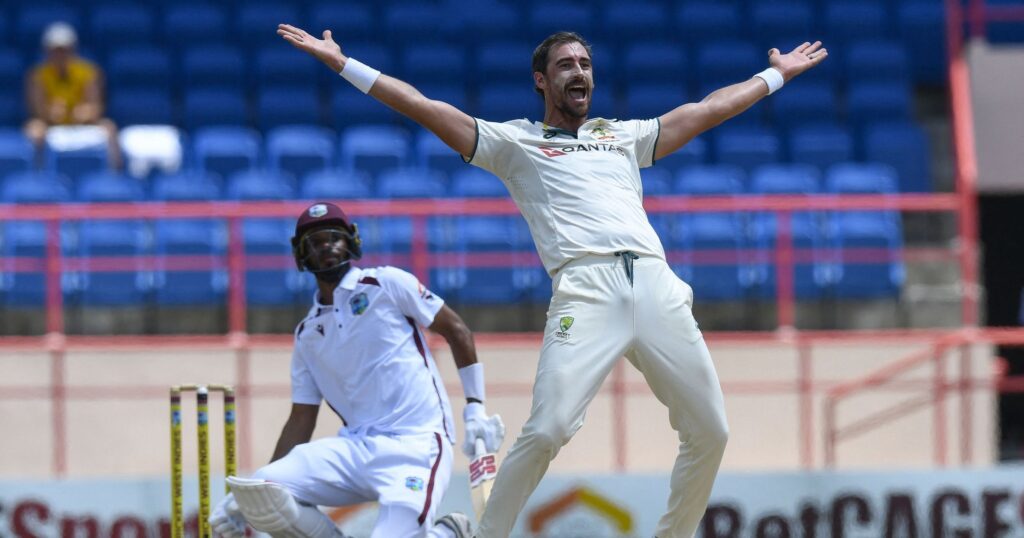The recent Test match between Australia and West Indies at Sabina Park in Jamaica proved to be a historic event, not only for its outcome but for the record-breaking performances witnessed. Australia triumphed convincingly, securing a 3-0 series victory, but what will linger in the minds of cricket fans is the astonishing second innings total of 27 runs scored by the West Indies. This total marks one of the lowest innings in the long and storied history of Test cricket, capturing the attention of analysts and enthusiasts alike.
At the forefront of Australia’s demolition job was Mitchell Starc, the fast-bowling sensation whose remarkable performance facilitated the rapid downfall of the West Indies batting line-up. Starc achieved the fastest five-wicket haul in Test cricket history, a spectacle that not only highlighted his capabilities but also showcased the West Indies’ struggles to mount a competitive innings. His devastating bowling performance will undoubtedly be remembered as a critical factor leading to West Indies’ historic failure.
Furthermore, the dismal score of 27 all out by the West Indies places them in a notoriously low ranking in cricket records. Analyzing the broader context of this match reveals that the 27-run total is among the five lowest innings totals ever recorded in Test matches, a statistic that adds a layer of embarrassment to the West Indies cricketing heritage.
Examining the five lowest Test innings totals provides perspective on just how rare such a pitiful score is. One of the earliest instances comes from the South Africa vs. England Test match in 1899, where South Africa was bowled out for a mere 35 runs in the fourth innings at Cape Town. Similarly, South Africa had another poor outing against England in 1924 when they could only manage 30 runs in their second innings at Birmingham. Additionally, during a match in Gqeberha in February 1896, South Africa again succumbed to England with a total of just 30 runs in the fourth innings.
In comparison, the West Indies’ 27 runs fall just above the record set by New Zealand against England in Auckland in 1955, where New Zealand collapsed for just 26 runs. The stark difference in scores highlights not only the struggles faced by the West Indies in the recent match but also the historical difficulty teams have had in avoiding low totals in Test cricket.
Shifting focus to individual performances, the record for the fastest five-wicket hauls also adds a layer of richness to cricketing history. Mitchell Starc may have just cemented his place at the top with his astounding achievement of five wickets in just 15 balls. This achievement eclipses the previous records held by players such as Shane Watson, who managed to secure five wickets in 21 balls in a 2011 game against South Africa, and Scott Boland and Stuart Broad, who both reached five wickets in 19 balls. These types of feats demonstrate not just individual prowess but also the unpredictable nature of the game, where any match can yield exceptional performances that rewrite the record books.
Overall, the extraordinary nature of the match between Australia and the West Indies at Sabina Park will be a topic of discussion among cricket fans and analysts for years to come. The implications of such a drastic defeat extend beyond the immediate shame—reflecting broader questions about the state of West Indies cricket and the need for rejuvenation. On the other hand, Mitchell Starc’s dazzling performance may very well secure his legacy as one of the modern greats of fast bowling in cricket history. As cricket evolves, matches like this remind fans of the sport’s unpredictability and the fine line between triumph and collapse. For both players and fans alike, the legacy of match results like this will endure, sparking discussions and analyses long into the future.












